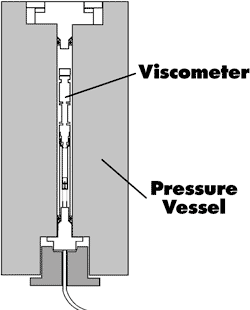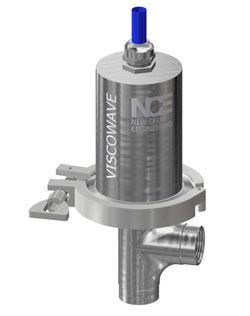Ongoing control of ink viscosity remains as, arguably, the most significant variable in the flexographic reproduction process. If it is not controlled continuously and closely, uniform ink coverage and accurate color match cannot be achieved. Given the costs of solvent and water-based inks, printing operations of any size can save significant costs by controlling ink viscosity.
Why Should I Worry About Viscosity and pH Control?
A good incentive for increasing your understanding of viscosity is to keep in mind that improper viscosity can cost money: a shift of one second on a #2 Zahn Cup can result in 50% excess ink laydown. Improper or high and low “spikes” in ink viscosity also results in ongoing color management issues, as this same one second shift can result in a change in color measuring dE 2 or greater. Viscosity affects not only the hue and strength of the printed color, but impacts other print quality attributes including ink lay, dot gain and trapping. Additionally, performance properties such as coating weight, drying speed and solvent retention are all effected by ink viscosity.
For water-based ink applications, equally important is the ongoing monitoring of pH, due to the interrelationship that exists between pH and viscosity control. Water based inks rely on precise pH control to maintain resin solubility and stability. While manual monitoring remains the “least expensive” means of monitoring pH and viscosity throughout a print run, it is quite common for these methods to quickly turn into a “tail chasing the dog” scenario due to several difficult to control factors:
- Inconsistent measurement practices between operators
- Accuracy of efflux cup
- Irregular timing between monitor checks
- Disruptive solvent/amine mix “shock” (too much at once)
- Pigment differences between inks
- Varying solvent/amine evaporation points
Whether running water or solvent based ink systems, checking ink manually with a stop watch and measuring cup or automatically with an unreliable mechanical system simply does not meet the demands of today’s packaging buyer in terms of color consistency within a job and from one run to the next.
Temperature and Viscosity Go Hand-in-Hand
Of equal significance lies the point of ink temperature control. Temperature is a critical parameter in the printing process, and is very often underestimated. Ink temperature is affected not only by ambient environmental conditions, but by press speed and run length, as well. With the ongoing trend toward higher press speeds, ink temperature control has warranted a greater focus. As ink temperature rises, viscosity drops and evaporation rates increase, resulting in another critical balance point. By controlling the ink temperatures, significant ink and solvent savings can be realized and color stability will improve, as well.
How Can I Control All These Variables?
Automated control systems were developed to overcome shortcomings and limitations of manually measuring viscosity and pH. Although automated systems have been available for many years, a better understanding of ink, the printing process and the influence of viscosity and pH on print quality have resulted in improved and more reliable systems. Most new presses sold today, particularly in the wide and mid-web segments, come equipped with varying types of advanced automated viscosity, pH and temperature control systems. It is of common industry agreement that ink viscosity should not vary by more than +/- 5% throughout a run…a standard that is difficult to achieve with manual measurement practices. Most of today’s automated systems feature even tighter tolerances than that. The benefits realized by the printing operation are numerous, but primarily include:

Figure A
“Falling Body” in-line viscometer
- Ink and solvent savings-often estimated between 25-60%
- Print quality and consistency through consistent color reproduction
- Ink quality is maintained throughout a run
- Maximized press operating speeds
- Minimized waste
- A permanent record for quality control purposes
For these reasons, it is well worth the consideration and investment in retrofitting older model presses with automated control systems. Print managers must select a viscometer/pH control system based on their production needs, and this is dependent upon numerous factors, including operator acceptance, consistent measurement and control, fit with existing equipment, expected cost savings, and maintenance and repair.
The traditional and prevalently common method of automated viscosity control in the printing industry has been with “falling body” technology. The basic concept is to measure the elapsed time required for the ball to fall under gravity through a sample-filled tube. The measurement is taken periodically and is not a continuous measurement. See Figure A.
The Latest Wave in Viscosity Controls

Figure B
VISCOWAVE Vibrating Rod in-line viscometer
More recently, the flexo print industry has been moving more towards the adoption of “vibrating rod” technology, which consists of a straight metal rod maintained in resonant vibration by a continuously applied power source. Installed in-line to the fluid flow, the sensor is between the ink pump and printing deck. Using the integrated computer, the viscometer emits sound waves in the ink-much like a musical “tuning fork. “A detection circuit then analyzes the changes in these waves caused by the tiniest of variations in the ink viscosity. See Figure B.
The advantages demonstrated with “vibrating rod” technology, particularly when choosing the VISCOWAVE technology offered by New Celio Engineering, are multiple when compared to “falling body” methods. Demonstrated improvements can be seen from:
- High accuracy rate
- No moving parts=cleaning not required
- Easy in-line installation
- No maintenance
- No wearing parts
- Compact and lightweight
- Full stainless steel construction
In addition, the VISCOWAVE comes with built-in temperature measurement and has options for controlling ink temperature to provide a “complete package” toward automated ink control.
Consideration of the added benefits recognized from the higher accuracy and dependability combined with reduced maintenance and cleaning may lead to printers with previously installed versions of automated viscosity control systems recognizing a significant ROI when upgrading to these newer technologies. The same concept holds true for automated pH control, as earlier systems were often found to be challenging to clean and maintain.

Looking for Automatic Viscosity and PH controls to be used on a 6 color Bobst DRO 1628 NT RS press.
Thank you for your comment, Mike! We do offer solutions for automatic pH and viscosity control. We will be in touch with you soon!
Can you tell me your solutions for automatic pH and viscosity control. This will be for a commercial printer who prints flexo board at 2000 ft./min
Looking for an automatic pH & viscosity control product. Would be mounted in a 55 gallon fiber drum. It would be for an overprint varnish
I would like to receive more information on the VISCOWAVE units, both the viscosity and the PH monitoring. Pricing would also be very helpful, say 1 unit vs. 12 units.
Hi Dustin,
Thanks for your interest! We will contact you via email.
I would like an online system to measure viscosity, pH and density of solvent and water based paints
Looking for a sytem looking for some more information and some pricing please
Looking for Automatic Viscosity and PH controls to be used on a 7 unit Heidelberg Intro Web press.
Good day we hare looking for Automatic Viscosity and PH control system is for Wide web machine please send us info.
I have a couple WB Flexo printers that have older equipment with zero viscosity or pH control. Do you have units that can be attached to the press in the area of the ink buckets/pumps and do your units actually adjust/control pH and viscosity?
Can you tell me your solutions for automatic pH and viscosity control. This will be for a commercial printer who prints flexo board at 2000 ft./min
Hi,
We are looking for an automatic PH and viscosity controller for 5 converting machines each of which runs up to 5 colors. If you could send me some information on your product with pricing that would be great.
Thank you
Chris